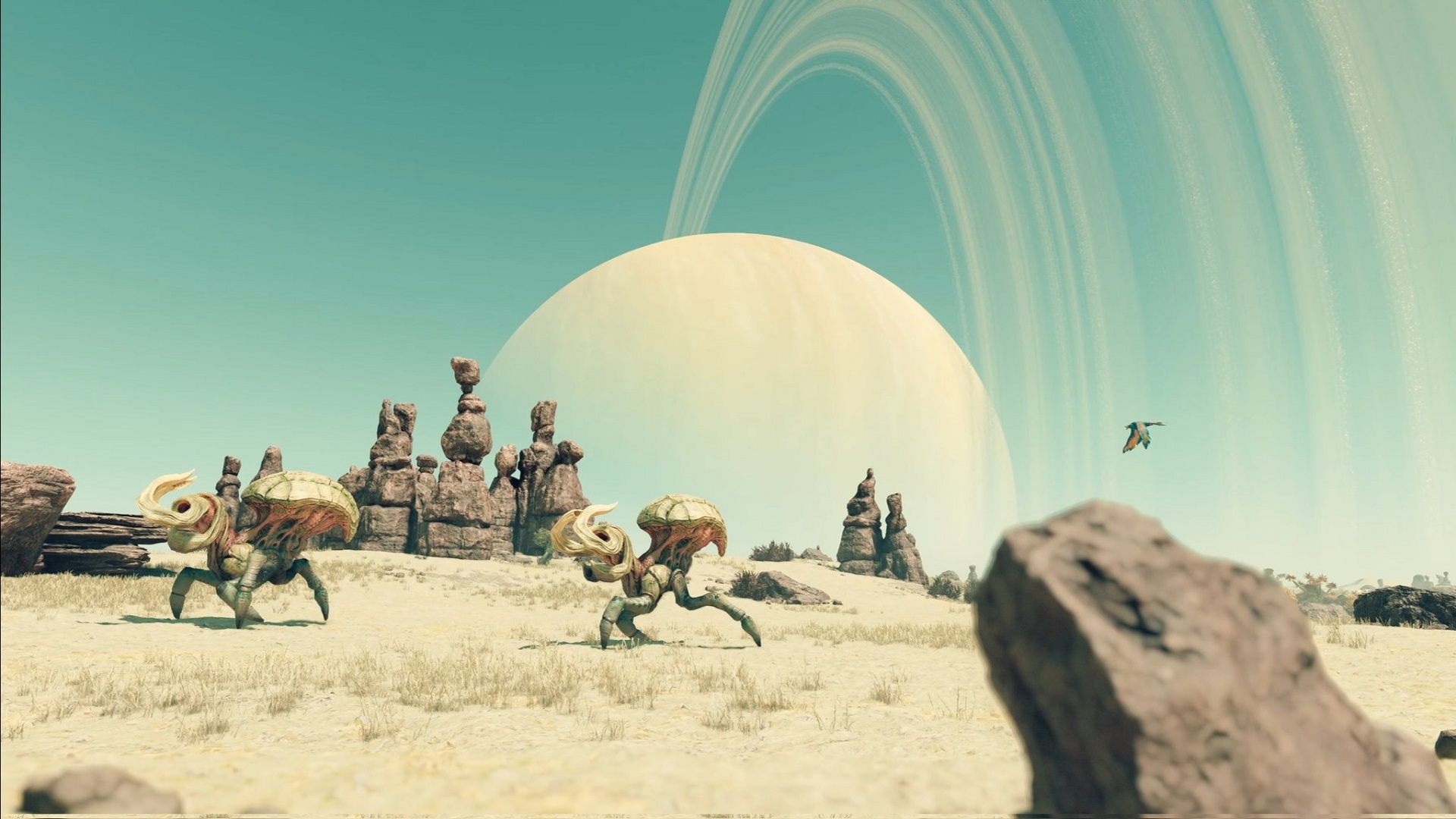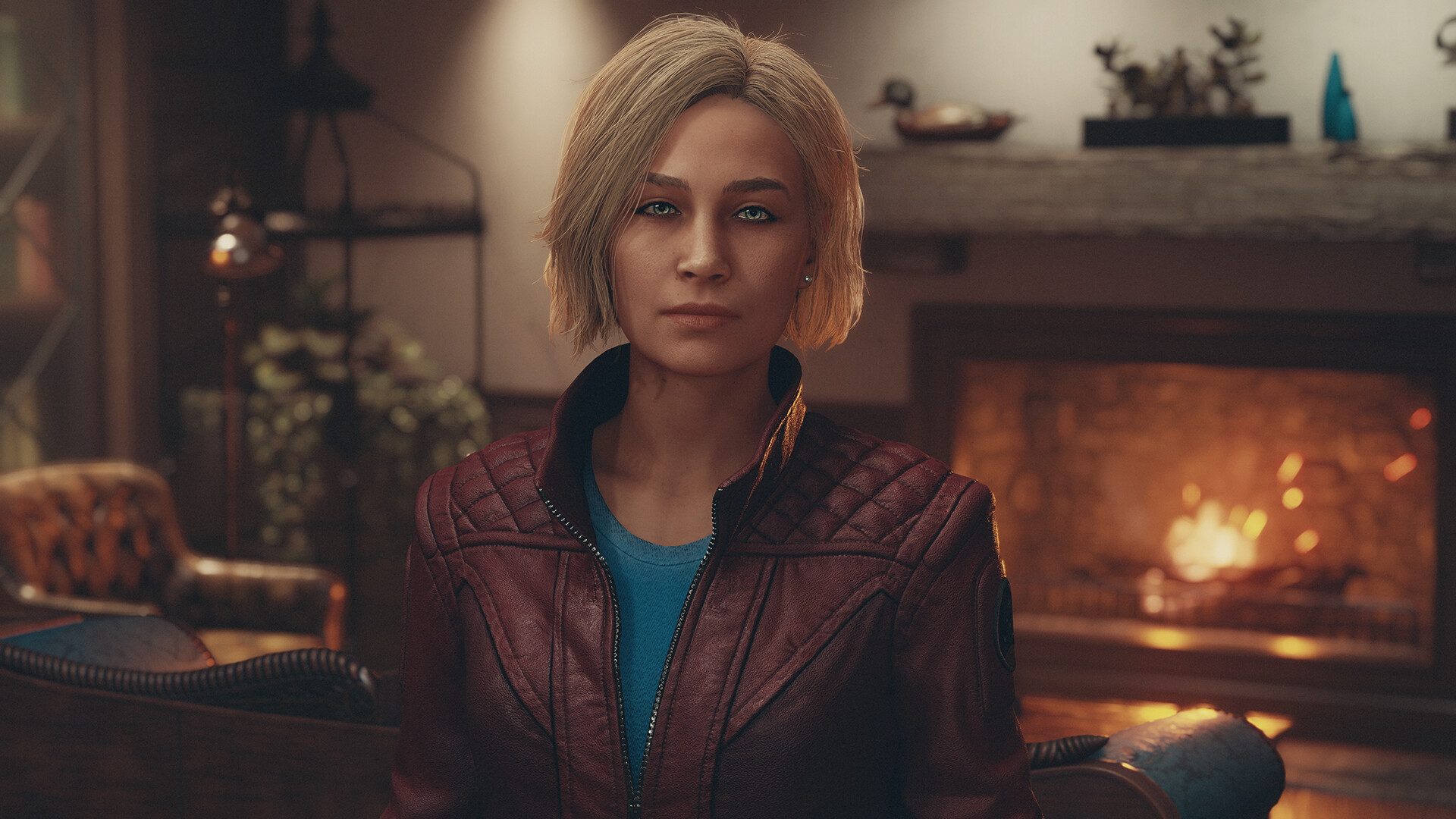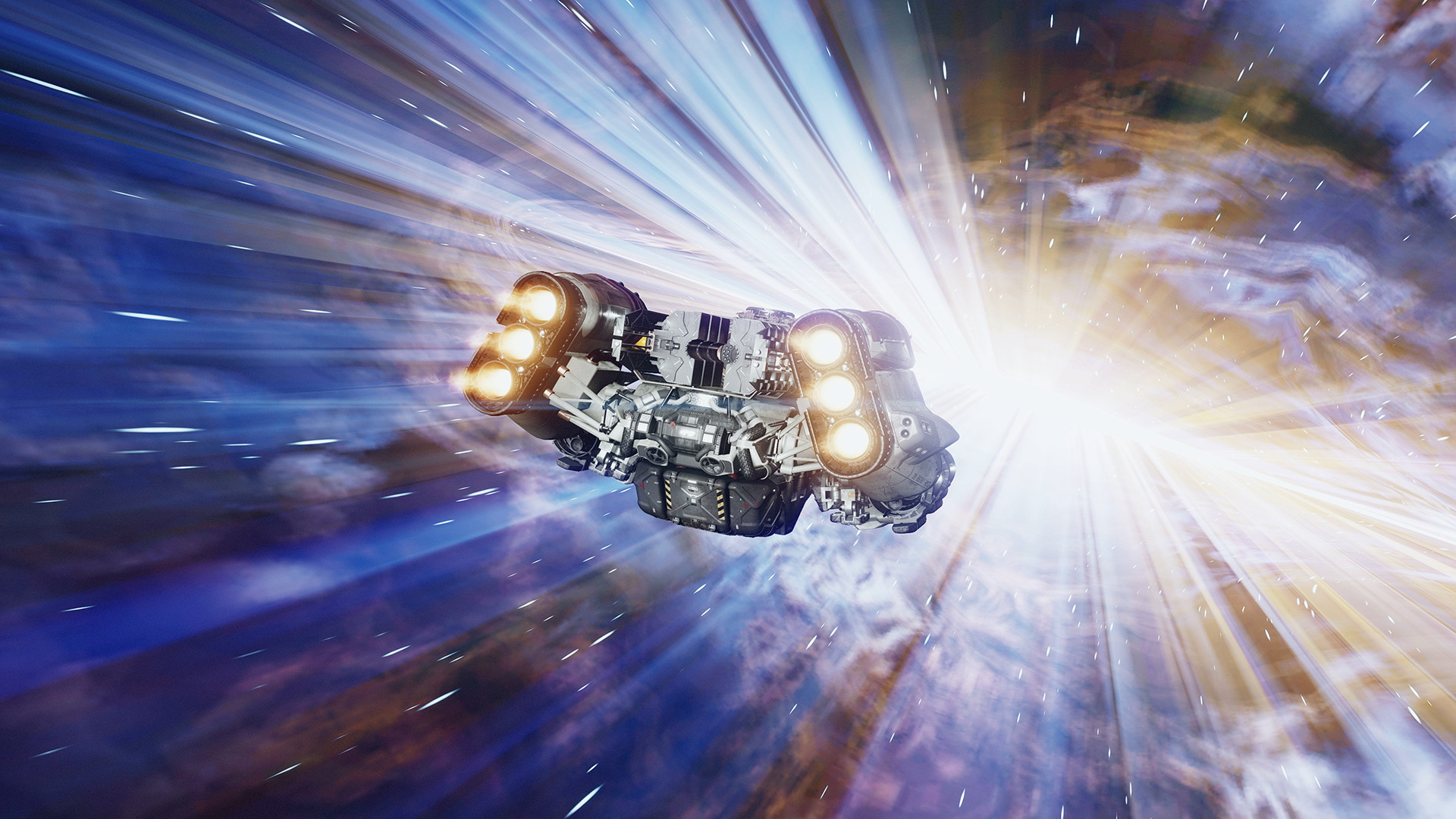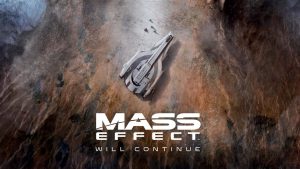
On very rare occasions has there been so much pressure on a game to not only deliver, but deliver on a scale that only a handful of games have ever managed to achieve. Starfield is carrying the weight of all of that pressure and more. Not only is it a new single player RPG by the makers of Fallout and The Elder Scrolls, not only is it Bethesda Game Studios’ first new IP in over two and a half decades, it’s also the its first game as a first party Microsoft studio, and to top it all off, it’s coming at a time when Xbox is in desperate need for a major win.
But if ever there was a developer that could prove equal to a task so herculean, it would be Bethesda Game Studios. Time and time again, BGS has revolutionized the open world RPG genre, and with Starfield, it has delivered yet another landmark experience that has set a new standard, one that games are invariably going to be judged against for years to come. This is an experience of mind-boggling scale and boundless ambition, and yet, in spite of how expansive and sprawling it is, it achieves its vision with an immaculate focus and thoroughness, bringing its interstellar setting to life in a way that is rare to see in this medium, or any other.
"Starfield is an experience of mind-boggling scale and boundless ambition, and yet, in spite of how expansive and sprawling it is, it achieves its vision with an immaculate focus and thoroughness, bringing its interstellar setting to life in a way that is rare to see in this medium, or any other."
Starfield’s setting of the Settled Systems is one of its biggest strengths. Set centuries in a future where humanity has left Earth behind and spread far across a multitude of star systems throughout the galaxy, it builds its setting on the foundations of rich, captivating, complex lore (which isn’t surprising for a BGS game). The Settled Systems are teeming with history, backstory, and conflict, and learning more about how humanity has advanced through the ages and the trials and tribulations it has faced over the course of three hundred years remains an utterly engaging experience.
A lot of that is down to how thoroughly Starfield builds its world, and how single-minded it feels in its drive to achieve its vision of the future. Every step of the way, it drives home the rules of its setting- the political landscape of the Settled Systems and its many different factions, the history of conflicts between them and how they have shaped things, and of course, just how deeply the game and its makers love space. Starfield commits itself to its space setting with an unprecedented level of attention to even the minutest of details, and constantly leverages that space setting to deliver an experience that feels intrinsically tied to it, rather than something that just happens to be set in space, as so many sci-fi stories across all media so often are.
And of course, the aforementioned factions are, in true BGS fashion, the heart and soul of Starfield. In fact, the faction questlines on offer here might even be among the best ever in a Bethesda RPG. Not only do they all boast legitimately captivating stories, they also exhibit incredible thematic, narrative, and gameplay variety. You’ll go from being a space pirate with the Crimson Fleet to a wild west sheriff with the Freestar Rangers, from trying to prevent a galaxy-wide xenowarfare threat with the United Colonies Vanguard to becoming a corporate espionage and sabotage expert with Ryujin Industries, and each questline will be teeming with incredible stories to discover, meticulously crafted places to travel to, and captivating choices to make.
That level of variation is also found across the many locations you visit throughout the Settled Systems, and this is also where Starfield really flexes its muscles with its art design. From the untamed frontier of Akila City to the grimy, cyberpunk streets of Neon, from the gleaming, futuristic towers of New Atlantis to the function-over-form style of the underground mining city of Cydonia, there’s an impressive level of variety to be found throughout the game. Add to that how wildly different and effectively established the histories and cultures of all of these places are, and the Settled Systems feel like a truly galaxy-spanning place of awe-inspiring scale. All of that is, of course, tied together by Starfield’s excellently realized NASApunk aesthetic, which underpins the entire experience.
"The Settled Systems are teeming with history, backstory, and conflict, and learning more about how humanity has advanced through the ages and the trials and tribulations it has faced over the course of three hundred years remains an utterly engaging experience."
Of course, as crucial as the factions and their questlines are to the game, they’re don’t exactly serve as its main narrative thrust- though thankfully, Starfield’s main story is also well worth diving into, to say the least. This is where the game truly embraces its spirit of exploration, tapping into something that has been making humanity look up at the stars for thousands of years, wondering what else is out there. Starting out as a swashbuckling story of space adventure, Starfield’s central narrative twists, turns, and expands in some really interesting ways as it progresses, and goes to some truly unexpected places, all of which is obviously best left unspoiled. Though the main questline takes a while to really get going, once it does, it begins serving up big reveals and major mysteries at a great pace, and from that point forward, it doesn’t let up.
Something that adds to Starfield’s narrative strengths is its cast of companions, who’ve received more love and attention than companions in any other past Bethesda RPG. The core cast – the members of Constellation, a group of space explorers that you join at the outset of the story – are a fun and endearing group, and they feel like a much more prominent part of your adventure than companions usually have in past BGS games. I don’t want to oversell things here – it’s not like the Constellation crew is going to give, say, Mass Effect 2’s ensemble a run for its money by any stretch of the imagination – but the core cast in Starfield is properly fleshed out, well written, and well-acted. Getting to know a character better over the course of several hours of gameplay and watching it all culminate with a story-driven quest is always an engaging experience, and the game is packed with quite a few such character-specific storylines.
And of course, this being a Bethesda RPG, even if you decide to ignore its glut of excellent, authored content and decide to strike out on your own, there’s no shortage of ways to make your own fun. I’ve spent a considerable amount of time just going around pickpocketing people, lockpicking my way into places where I’m not supposed to be, hunting down valuable loot and weapons, having random encounters – both friendly and otherwise – while flying my ship out in space, and so much more. I’ve had an absolute blast doing all of it, and I’m not done yet by any means.
On top of all of that, there’s a whole side to Starfield that can offer an endless cycle of content that you don’t even have to touch if you don’t want to. There are a thousand procedurally generated planets in the Settled Systems that, separate from the many handcrafted locations in the game, can be explored to your heart’s content. I’ll admit that exploring uncharted planets, scanning alien flora and fauna, and building outposts is something that I haven’t spent a considerable amount of time doing, but I’m glad that Starfield gives you the freedom to engage with that part of the experience as much or as little as you want. For those who want a little bit of No Many’s Sky in their space-faring Bethesda RPG, there’s a vast web of systems and mechanics on offer here for you to dive into.
"This being a Bethesda RPG, even if you decide to ignore its glut of excellent, authored content and decide to strike out on your own, there’s no shortage of ways to make your own fun."
But really, it should come as no surprise that Starfield offers the level of freedom and player agency that it does. “Be who you want to be” is a tenet that Bethesda RPGs have always taken to heart, and Starfield does it with a dedication that has to be applauded. Do you want to be a rogue and a thief with a heart of gold? Or a space pirate leaving a trail of wreckage and corpses in your wake? Perhaps a dedicated military servant who upholds the law and protects people? Or maybe an explorer who wants to just hop into a ship’s cockpit and plant your flag in as many uncharted planets as you can? Starfield gives you the freedom to role-play however you want. An excellent, detailed character creator serves as the foundation for that, letting you select your backstory and unique traits from a sizeable pool of options, while beyond that, the game works overtime to let you play how you want. Whether you want to start firing your weapons at the first sign of trouble, try and persuade people with your speech skills, or lockpick or stealth your way through situations, Starfield very rarely puts restrictions on you in what you can do.
There are, of course, moments where combat is unavoidable, but they’re spaced out enough that it never feels like the game is forcing you into firefights every chance it gets- which, I think, works in its favour, because combat in Starfield, though solid and enjoyable in its own right, is probably the least fun part of the game. That doesn’t mean it’s not fun- gunplay here has a heft and punchiness to it that Fallout has always been sorely lacking, so moment-to-moment gameplay during firefights remains enjoyable on a fundamental level, especially as you get to see your increasingly powerful gear and weapons in action. It’s also worth mentioning that there’s quite a bit of weapon variety here, and tailoring your loadout to suit your needs does feel rewarding. However, enemy and companion AI can often by startlingly suicidal, which can be a bit frustrating, and does make combat feel less engaging than the rest of the experience. Then again, I almost always find non-combat builds much more inherently fun in RPGs.
It’s a good thing, then, that progression mechanics in Starfield are as good and flexible as they are. On top of tweaking your build with different gear and weapons, you also invest skill points across five skill trees, ranging from social skills and combat skills to piloting skills and physical attributes. After being unlocked, each skill can also be upgraded further four more times, with each upgrade becoming available after you’ve hit a certain threshold with actions or activities related to that specific skill- so, for instance, if you want to spend a skill point to upgrade your pistol damage skill, you’ll first have to kill a certain amount of enemies with pistols.
It’s a progression system that’ll be familiar to anyone who’s played a Bethesda RPG before, and deserves a lot of credit not only for the way it interweaves structured upgrades with moment-to-moment gameplay, but also in how much build variety it offers. Across its five skill trees, Starfield lets you focus on a vast variety of things, giving you the freedom to make a character focused on all-out gunplay, stealth and thievery, persuasion and bribery, ship building and customization, physical attributes, or whatever else might suit how you want to play the game.
"It should come as no surprise that Starfield offers the level of freedom and player agency that it does. “Be who you want to be” is a tenet that Bethesda RPGs have always taken to heart, and Starfield does it with a dedication that has to be applauded."
Another important part of Starfield’s gameplay loop is, of course, spaceflight and combat, and it sticks the landing here as well. Moment-to-moment, flying a ship and engaging in dogfights feels fun, thanks to responsive and uncomplicated controls. The entire process also doesn’t feel too straightforward, courtesy of the power allocation system. Your ship’s reactor produces a finite amount of power, and you have to decide how to distribute it across your ship’s many systems, including shields, lasers, missiles, engines, and more. If you’re in a dogfight, for instance, you’ll want power routed primarily to your weapons and shields, while if you want your ship to fly faster, you’ll need to pump more power into your engines. It’s not too complicated as systems go, but it does a good job of keeping you involved just enough so that space flight and combat never feel like a chore, or a part of the game where you’re just going through the motions. What really makes anything and everything to do with your ship one of Starfield’s brightest highlights, however, is its suite of ship building mechanics.
Though I haven’t spent a ton of time building and managing outposts, I’ve spent hours building and customizing my own ships, and I can’t tell you how much Starfield has impressed me with how flexible and expansive it is on that front. Though the ship building controls can be a bit finnicky at first on a controller, it doesn’t take long to get used to them, at which point it’s hard not to be taken aback by how much freedom the toolset boasts. Any shapes or sizes your mind could conjure up, Starfield will probably let you craft exactly the ship you want, depending on how much time you’re willing to invest.
There’s a plethora of options available here for different bays, habs, engines, grav drives, cosmetic elements, shields, weapons, and so much more, and not only can all of that affect your ship’s performance in a variety of ways and drastically change its appearance, you can also walk around inside its altered interiors and see how it’s changed, and how your growing crew is inhabiting the flying home you’ve created for them. It’s incredibly deep and incredibly rewarding, and becomes even more so when you consider the fact that you can dive even deeper into improving and customizing your vessel though a large amount of skill tree upgrades that are tied specifically to ship-related things.
The one area of Starfield that people will likely be most apprehensive about is its technical aspects – which is understandable, given BGS’ track record – though happily enough, this is the most polished and stable a Bethesda RPG has ever been at launch. It does still have a few rough edges, of course, which is to be expected from a game that’s operating on this scale. As an example, Starfield, like previous BGS RPGs, is also not a seamless open world, which means there are a lot of loading screens between instances, but thankfully, load times are almost always pretty short at 4-5 seconds on average, so I never found them to be anything more than a slight annoyance.
"Starfield’s ship building offers a plethora of options for different bays, habs, engines, grav drives, cosmetic elements, shields, weapons, and so much more, and not only can all of that affect your ship’s performance in a variety of ways and drastically change its appearance, you can also walk around inside its altered interiors and see how it’s changed, and how your growing crew is inhabiting the flying home you’ve created for them. It’s incredibly deep and incredibly rewarding."
Beyond that, NPCs’ faces can often look like they’re made out of clay covered in oil, animations can be a bit robotic, and there can be some texture pop-in and frame rate drops when you’re landing on a planet. By and large, however, technical issues in Starfield feel like footnotes at most. Playing on an Xbox Series X, the vast majority of the issues I have encountered were the kind that didn’t impact my experience beyond me simply noticing them. The one major bug I did unfortunately run into locked me out of a major side questline, and yes, that was a bummer- but the game helped me get over it with remarkable ease, thanks to the litany of other things I could do and be just as enthralled by.
In more ways than one, Starfield is a game that you can lose yourself in for endless hours. It boasts a vast, complex, and nuanced web of a multitude of gameplay systems and mechanics, offering incredible depth and emphasizing player freedom every step of the way. It’s teeming with engaging, captivating stories, whether you’re moving forward with the main quest, wrangling with one of the many factions, picking up smaller side- quests, or doing some extracurricular reading to dive into the oodles of rich lore on offer. And of course, it’s a massive, sprawling experience in the purest sense, absolutely brimming with things to do, people to meet, and places to see.
Even after having spent dozens of hours exploring the expanses of the Settled Systems, I feel like I’ve only just started scratching the surface. And while ordinarily an experience that massive might have started wearing thin for me by now, with Starfield, I’m still ravenously hungry to consume every little bit of it. It’s an incredible experience that not only boasts immense scale, but also backs it up with actual substance and legitimate depth. In the end, it delivers a landmark achievement in gaming that’s going to be spoken about for years to come- an accomplishment that Bethesda Game Studios is all too familiar with.
This game was reviewed on the Xbox Series X.
An incredibly realized setting that exhibits a startling level of thoroughness and attention to detail; Teeming with rich and captivating lore; Locations throughout the sprawling galaxy exhibit an impressive level of variety; Excellent art design breathes life into the setting; Faction questlines boast incredible thematic, narrative, and gameplay experience, and tell engaging stories; Well written, well-acted companion characters with interesting storylines; Endless amount of ways to make your own fun; Constantly emphasizes player freedom, letting you be whoever you want to be; Combat is much punchier and more enjoyable than past BGS titles; Deep, flexible progression mechanics allow for a great deal of build variety; Spaceflight and combat never gets boring, thanks to tight controls and the power allocation system; Vast, expansive, and rewarding ship building toolset can keep you hooked for hours; Most polished and stable BGS launch yet.
Combat is sometimes let down by frustrating enemy and companion AI; Some technical issues, most of which are rather minor.





















